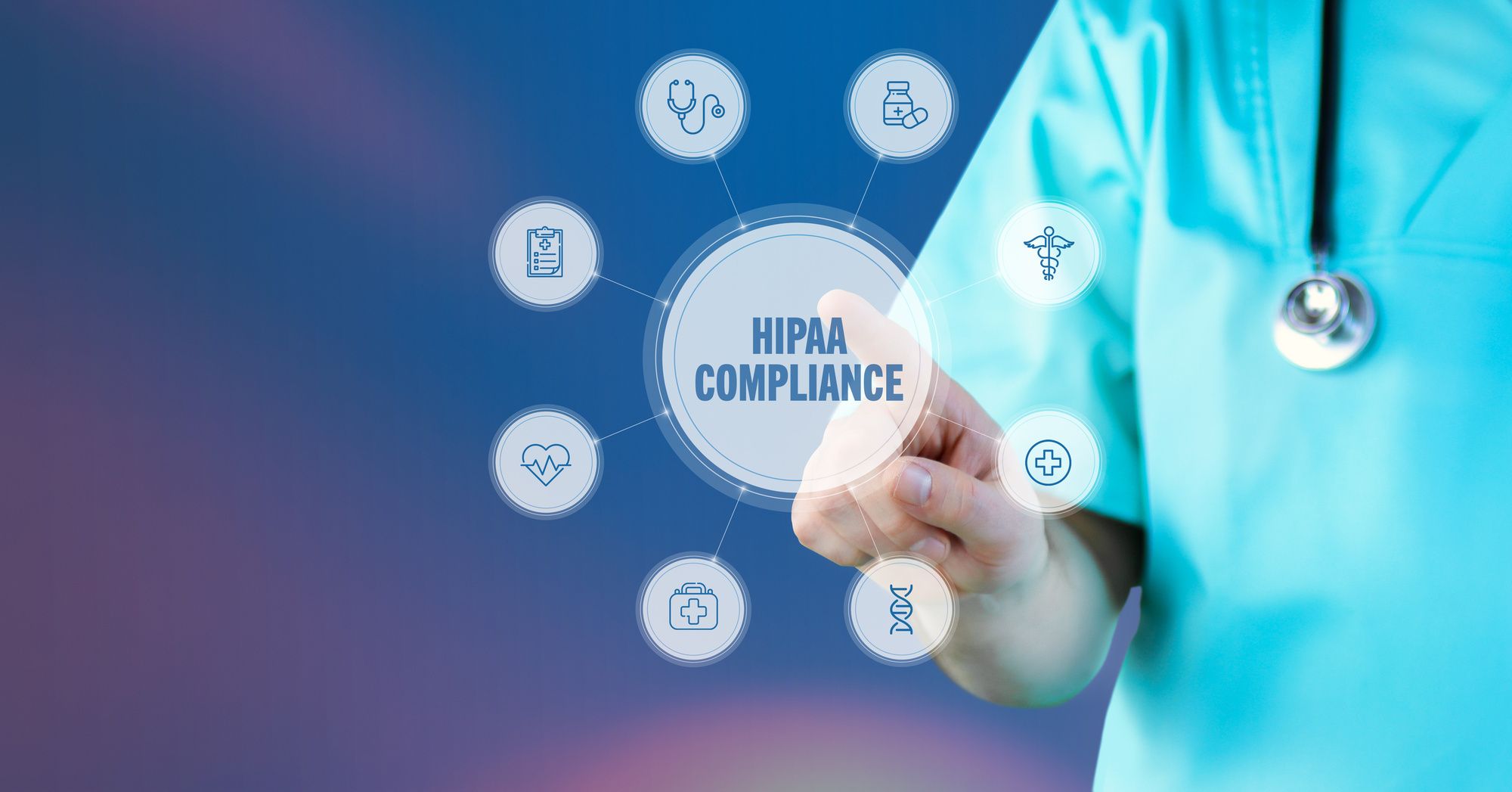The Health Insurance Portability and Accountability Act (HIPAA) establishes stringent requirements for securing protected health information (PHI). Healthcare organizations handling PHI must implement safeguards to ensure data privacy and prevent improper access, use, or disclosure of sensitive patient information. A critical technology for HIPAA compliance is data loss prevention (DLP).
DLP systems continuously monitor network traffic and endpoints to detect potential data breaches or mishandling of confidential data. DLP enables automated enforcement of data security policies and provides comprehensive auditing and forensic capabilities. For healthcare entities subject to HIPAA regulations, DLP is an indispensable component of compliance programs. Here are six ways DLP aids HIPAA compliance:
1- Preventing Unauthorized PHI Access
A fundamental HIPAA requirement is implementing controls to prevent unauthorized access to PHI. This encompasses both external threats and insider risks, such as employees improperly accessing patient records. When it comes to data security, DLP provides powerful capabilities to detect and block various vectors through which PHI could be accessed without proper approval.
For instance, DLP can continuously scan outbound network traffic for indicators of unauthorized data exfiltration attempts. If a malicious actor tries to covertly send PHI outside the organization, DLP will instantly detect and block the transmission. DLP can also monitor user activities on endpoints in real time. If an employee connects unauthorized cloud storage services or attempts to copy PHI onto removable media like a USB drive, DLP can intervene and stop the action.
By proactively preventing improper PHI access and transmission through multiple threat vectors, DLP significantly reduces the risks of HIPAA non-compliance and data breaches.

2- Monitoring Systems For Improper PHI Handling
HIPAA compliance mandates ongoing auditing and monitoring to verify PHI is properly handled according to regulatory privacy and security standards. DLP delivers continuous visibility into how regulated data such as PHI is being used across an organization's diverse systems, including on-premises servers, cloud services, networks, and endpoints.
DLP's advanced content inspection capabilities can accurately identify PHI in files, databases, emails, instant messages, and numerous other data formats. DLP through machine learning can even detect improper PHI handling in new, unexpected situations. If PHI is detected being mishandled, such as an employee emailing patient data to their personal account, DLP will immediately flag the incident for investigation and response before larger breaches occur.
By empowering ongoing PHI monitoring across the entire IT environment, DLP massively strengthens HIPAA compliance programs by surfacing improper data handling risks early when they can still be contained.
3- PHI Policy Enforcement
To comply with HIPAA standards, healthcare organizations must establish and enforce comprehensive policies governing PHI handling, sharing, transmission, storage, and security. Manual policy enforcement presents major challenges. DLP enables organizations to automate the enforcement of PHI policies, which magnifies the effectiveness of HIPAA compliance initiatives.
Organizations can configure DLP systems to align with their institutional PHI policies and then let the technology automatically apply and enforce those policies across endpoints, networks, cloud platforms, and any other component in the environment. For example, DLP can restrict PHI from being copied to external media, block unapproved cloud apps containing PHI, mandate PHI encryption, and enforce regulatory policies like the General Data Protection Regulation (GDPR). By orchestrating policy enforcement digitally, DLP reduces human errors and safeguards PHI far more efficiently than manual controls.
4- Scanning Content To Locate PHI
To comply with HIPAA regulations, organizations must locate and classify where PHI resides within their systems, networks, and services so it can be properly protected. DLP provides intelligent content inspection capabilities that can systematically scan an organization's entire digital footprint to accurately detect files, transactions, and data repositories containing PHI.
Advanced optical character recognition (OCR), fingerprinting, regex matching, database discovery, exact data matching, and other techniques ensure DLP can identify PHI even if it's embedded in complex files, databases, images, or unfamiliar formats. Organizations can leverage DLP's PHI discovery results to categorize sensitive assets, determine their level of HIPAA compliance, fully scope compliance risk exposure, and apply appropriate controls according to HIPAA requirements. Locating PHI is the critical first step for managing HIPAA compliance.
5- Forensic Investigations Of HIPAA Breaches
If a PHI breach occurs, HIPAA demands thorough forensic investigation capabilities to determine root causes, evaluate compromise scope, identify affected data and patients, and fulfill breach notification requirements. DLP provides extremely rich auditing, reporting, analytics, and data capture features that enable rapid, detailed forensic analysis of potential HIPAA breaches.
DLP endpoint agents can reconstruct user activities at the keystroke level to unravel events leading up to a PHI breach. Network DLP appliances maintain granular audit trails of content traversing networks, including PHI, for deep forensic inspection. Dashboards and alerts centralize visibility into DLP findings across the environment. DLP supplies the comprehensive forensic evidence trail mandated under HIPAA to thoroughly investigate breaches.
6- Encrypting PHI
Rendering PHI unreadable by unauthorized parties is a critical data protection technique required by HIPAA security standards. Some DLP solutions offer built-in encryption capabilities that automatically encrypt PHI at rest, in motion, or during high-risk activities such as copying files to removable media. For instance, DLP can encrypt PHI being transferred to USB drives, cloud storage, or endpoints to prevent data exposure if those devices are lost or stolen.
DLP encryption integrated with PHI monitoring, content-aware detection, and policy enforcement constitutes a layered defense-in-depth approach to securing PHI and satisfying HIPAA controls. Encrypting PHI also aligns with HIPAA's emphasis on risk minimization by rendering data useless in the event of loss or theft. For highly sensitive data like PHI, DLP encryption represents a HIPAA compliance best practice.
Achieving HIPAA Compliance
For healthcare organizations, HIPAA compliance is a never-ending mandate requiring vigilant effort as threats, regulations, business practices, and technologies continuously evolve. DLP represents a foundational data security platform that dramatically simplifies and strengthens HIPAA compliance programs.
With capabilities like real-time PHI monitoring, customizable policy enforcement, endpoint control, robust auditing, and encryption, DLP enables entities to effectively secure PHI, implement least-privilege PHI handling, and respond swiftly to incidents. By leveraging DLP as part of their overall compliance initiatives, healthcare organizations can mature their HIPAA data privacy postures while improving patient trust and business performance.
James Miller
James Miller is a data security specialist with a focus on data loss prevention (DLP) and its role in aiding HIPAA compliance. With years of experience in the healthcare industry, James is dedicated to helping organizations protect sensitive patient information. In his free time, he enjoys reading about the latest data security trends, attending IT conferences, and volunteering for healthcare IT initiatives.


